 W
WThe Acts of Union 1800 were parallel acts of the Parliament of Great Britain and the Parliament of Ireland which united the Kingdom of Great Britain and the Kingdom of Ireland to create the United Kingdom of Great Britain and Ireland. The acts came into force on 1 January 1801, and the merged Parliament of the United Kingdom had its first meeting on 22 January 1801.
 W
WThe Act Zluky was an agreement signed on January 22, 1919, by the Ukrainian People's Republic and the West Ukrainian People's Republic on the St Sophia Square in Kyiv. Since 1999 the Day of Unity of Ukraine, celebrated every year on January 22 to mark the signing of the treaty, is a state holiday; but not a public holiday.
 W
WThe Acts of Union were two Acts of Parliament: the Union with Scotland Act 1706 passed by the Parliament of England, and the Union with England Act passed in 1707 by the Parliament of Scotland. They put into effect the terms of the Treaty of Union that had been agreed on 22 July 1706, following negotiation between commissioners representing the parliaments of the two countries. By the two Acts, the Kingdom of England and the Kingdom of Scotland—which at the time were separate states with separate legislatures, but with the same monarch—were, in the words of the Treaty, "United into One Kingdom by the Name of Great Britain".
 W
WAkhand Bharat, also known as Akhand Hindustan is an irredentist term literally meaning Undivided India. It posits that modern-day India, Pakistan, Bangladesh, Nepal, Sri Lanka, and Bhutan are one nation. Afghanistan and Myanmar are often partially included in as well.
 W
WThe unification of Albania and Kosovo is a political idea, revived after Kosovo declared independence in 2008. This idea has been brought into connection with the irredentist concept of Greater Albania. As of the 2010s, 93% of Kosovars are ethnic Albanians.
 W
WThe Anschluss, also known as the Anschluss Österreichs, was the annexation of Austria into Nazi Germany on 12 March 1938.
 W
WThe Federation of Australia was the process by which the six separate British self-governing colonies of Queensland, New South Wales, Victoria, Tasmania, South Australia, and Western Australia agreed to unite and form the Commonwealth of Australia, establishing a system of federalism in Australia. The colonies of Fiji and New Zealand were originally part of this process, but they decided not to join the federation. Following federation, the six colonies that united to form the Commonwealth of Australia as states kept the systems of government that they had developed as separate colonies, but they also agreed to have a federal government that was responsible for matters concerning the whole nation. When the Constitution of Australia came into force, on 1 January 1901, the colonies collectively became states of the Commonwealth of Australia.
 W
WThe union of Brittany and France was a critical step in the formation of modern-day France. Brittany had been a semi-independent component of the Kingdom of France since Clovis I was given authority over the Gallo-Roman domain during the 5th century. It was first recorded as a "duchy" during the rule of Nominoe in 846. Over the centuries, the fealty demonstrated by the Duchy of Brittany toward the French king depended significantly on the individuals holding the two titles, as well as the involvement of the English monarchy at that particular time. The reign of Francis II, Duke of Brittany, was at an especially crucial time, as the nobles struggled to maintain their autonomy against the increasing central authority desired by Louis XI of France. As a result of several wars, treaties, and papal decisions, Brittany was united with France through the eventual marriage of Louis XI's son Charles VIII to the heiress of Brittany, Anne in 1491. However, because of the different systems of inheritance between the two realms, the crown and the duchy were not held by the same hereditary claimant until the reign of Henry II, beginning 1547.
 W
WThe Unification of Bulgaria was the act of unification of the Principality of Bulgaria and the province of Eastern Rumelia in the autumn of 1885. It was co-ordinated by the Bulgarian Secret Central Revolutionary Committee (BSCRC). Both had been parts of the Ottoman Empire, but the Principality had functioned de facto independently whilst the Rumelian province was autonomous and had an Ottoman presence. The Unification was accomplished after revolts in Eastern Rumelian towns, followed by a coup on 18 September [O.S. 6 September] 1885 supported by the Bulgarian Knyaz Alexander I. The BSCRC, formed by Zahari Stoyanov, began actively popularizing the idea of unification by means of the press and public demonstrations in the spring of 1885.
 W
WCanadian Confederation was the process by which the three colonies of Canada, Nova Scotia, and New Brunswick were united into one federation called the Dominion of Canada on July 1, 1867. Upon confederation, what had formerly been called the Province of Canada was divided into the two provinces of Ontario and Quebec. Thus, the new Dominion initially consisted of four provinces, including the provinces of Nova Scotia and New Brunswick. Over the years since Confederation, Canada has seen numerous territorial changes and expansions, resulting in the current number of ten provinces and three territories.
 W
WQin's wars of unification were a series of military campaigns launched in the late 3rd century BC by the Qin state against the other six major Chinese states — Han, Zhao, Yan, Wei, Chu and Qi. It has been described as spectacular, an excellent military strategy established through extraodinarily scintillating policies.
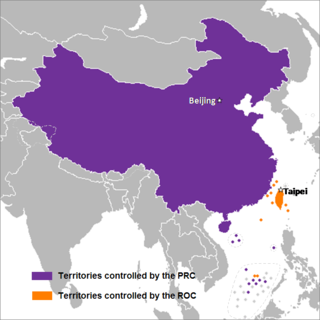 W
WChinese unification, also known as the Cross-Strait unification or Chinese reunification, is the potential unification of territory currently controlled by the People's Republic of China and the Republic of China under one political entity, possibly the formation of a political union between the two republics. Together with full Taiwan independence, unification is one of the main proposals to address questions on the political status of Taiwan, which is a central focus of Cross-Strait relations.
 W
WÉire Nua, or "New Ireland", was a proposal supported by the Provisional IRA and Sinn Féin during the 1970s and early 1980s for a federal United Ireland. The proposal was particularly associated with the Dublin-based leadership group centred on Ruairí Ó Brádaigh and Dáithí Ó Conaill, who were the authors of the policy.
 W
WGalicia irredenta or Galicia estremeira, also spelled as Galiza irredenta and Galiza estremeira and also known as Faixa Leste or Franxa Leste, is a term used for all Galician-speaking territories located outside of Galicia. These are all located in Spain, in either Asturias or Castile and León. These territories are sometimes divided into three subregions: El Bierzo, Eo-Navia and As Portelas.
 W
WGerman reunification was the process in 1990 in which the German Democratic Republic (GDR) became part of the Federal Republic of Germany (FRG) to form the reunited nation of Germany.
 W
WThe Unification of Germany into the German Empire, a Prussia-dominated nation state with federal features, officially occurred on 18 January 1871 at the Versailles Palace's Hall of Mirrors in France. Princes of the German states gathered there to proclaim Wilhelm of Prussia as Emperor of the German Empire after the French capitulation in the Franco-Prussian War.
 W
WThe Great National Assembly of Serbs, Bunjevci and other Slavs in Banat, Bačka and Baranja or Novi Sad Assembly was an assembly held in Novi Sad on 25 November 1918, which proclaimed the unification of Banat, Bačka and Baranya with the Kingdom of Serbia.
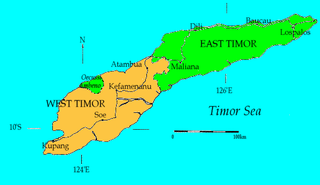 W
WGreat Timor refers to the irredentist concept of a united and independent island of Timor, which is currently divided between the independent state of East Timor and the Indonesian territory of West Timor. The concept of unifying the island has been raised since the mid-20th century.
 W
WIndian reunification refers to the potential reunification of India with what is now Bangladesh and Pakistan, the latter of which was partitioned from British India in 1947.
 W
WUnited Ireland, also referred to as Irish reunification, is the proposition that all of Ireland should be a single sovereign state. At present, the island is divided politically; the sovereign Republic of Ireland has jurisdiction over the majority of Ireland, while Northern Ireland, which lies entirely within Ulster, is part of the United Kingdom. Achieving a united Ireland is a central tenet of Irish nationalism, particularly of both mainstream and dissident Irish republican political and paramilitary organisations. Unionists support Northern Ireland remaining part of the United Kingdom, and therefore oppose Irish unification.
 W
WItalian irredentism was a nationalist movement during the late nineteenth and early twentieth centuries in Italy with irredentist goals which promoted the unification of geographic areas in which indigenous peoples considered to be ethnic Italians and/or Italian-speaking individuals formed a majority, or substantial minority, of the population.
 W
WItalian unification, also known as the Risorgimento, was the 19th-century political and social movement that resulted in the consolidation of different states of the Italian Peninsula into a single state, the Kingdom of Italy. Inspired by the rebellions in the 1820s and 1830s against the outcome of the Congress of Vienna, the unification process was precipitated by the revolutions of 1848, and reached completion in 1871, when Rome was officially designated the capital of the Kingdom of Italy.
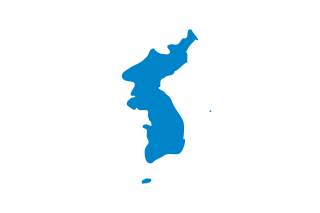 W
WKorean reunification refers to the potential reunification of North Korea and South Korea into a single Korean sovereign state. The process towards reunification was started by the June 15th North–South Joint Declaration in June 2000, and was reaffirmed by the Panmunjom Declaration for Peace, Prosperity and Unification of the Korean Peninsula in April 2018, and the joint statement of the United States President Donald Trump and North Korean Supreme Leader Kim Jong-un at the Singapore Summit in June 2018. In the Panmunjom Declaration, the two countries agreed to work towards a peaceful reunification of Korea in the future.
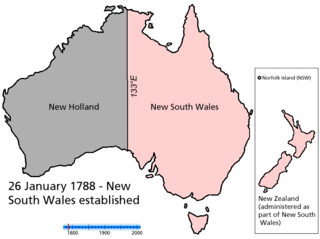 W
WProposals for new Australian states have been numerous since the late 19th and early 20th centuries; however, to date, no states have been added to Australia since Federation in 1901. Many proposals have suggested an Aboriginal state which would resemble the Inuit territory of Nunavut in Canada, while others have suggested incorporating New Zealand, Papua New Guinea and East Timor. Other proposals suggest making the Northern Territory and/or Australian Capital Territory states.
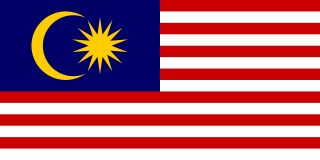 W
WThe Greater Malayan Confederation, or Maphilindo, was a proposed non-political confederation or union of three Southeast Asian countries in the Malay Archipelago.
 W
WThe Megali Idea was an irredentist concept that expressed the goal of reviving the Byzantine Empire, by establishing a Greek state, which would include the large Greek populations that were still under Ottoman rule after the end of the Greek War of Independence (1821–1828) and all the regions that traditionally belonged to Greeks since ancient times.
 W
WMiatsum is a concept and a slogan used during the Karabakh movement in the late 1980s and early 1990s, which led to the First Nagorno-Karabakh War in 1992–1994.
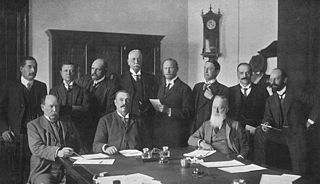 W
WThe National Convention, also known as the Convention on the Closer Union of South Africa or the Closer Union Convention, was a constitutional convention held between 1908 and 1909 in Durban, Cape Town and Bloemfontein. The convention led to the adoption of the South Africa Act by the British Parliament and thus to the creation of the Union of South Africa. The four colonies of the area that would become South Africa - the Cape Colony, Natal Colony, the Orange River Colony and the Transvaal Colony - were represented at the convention, along with a delegation from Rhodesia. There were 33 delegates in total, with the Cape being represented by 12, the Transvaal eight, the Orange River five, Natal five, and Rhodesia three. The convention was held behind closed doors, in the fear that a public affair would lead delegates to refuse compromising on contentious areas of disagreement. All the delegates were white men, a third of them were farmers, ten were lawyers, and some were academics. Two-thirds had fought on either side of the Second Boer War.
 W
WThe Northeast Flag Replacement refers to Zhang Xueliang's announcement on 29 December 1928 that all banners of the Beiyang government in Manchuria would be replaced with the flag of the Nationalist government, thus nominally uniting China under one government.
 W
WThe Unification of Norway is the process by which Norway merged from several petty kingdoms into a single kingdom, predecessor to modern Kingdom of Norway.
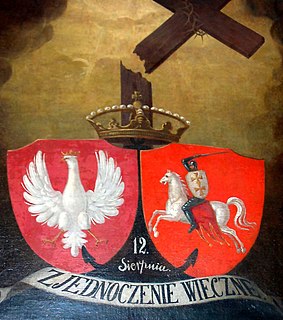 W
WThe Polish–Lithuanian Union was a relationship created by a series of acts and alliances between the Crown of the Kingdom of Poland and the Grand Duchy of Lithuania that lasted for prolonged periods of time from 1385 and led to the creation of the Polish–Lithuanian Commonwealth, or the Republic of the Two Nations", in 1569 and eventually to the creation of a unitary state in 1791.
 W
WThe Centenary March or Centenary March of the Great Union was a civic demonstration organized by George Simion and various non-governmental organizations from Romania and Moldova, known under the collective name "Alliance for the Centenary". It started in Alba Iulia (Romania) on 1 July 2018 and ended in Chișinău (Moldova) on 1 September 2018. Its participants, both Moldovans and Romanians, targeted 300 cities and villages, passing through several points significant for the Great Union.
 W
WThe unification of Romania and Moldova is a popular concept in the two countries beginning with the late 1980s, during the collapse of communism. The Romanian Revolution in 1989 and the independence of Moldova in 1991 further contributed to the development of a movement for the unification of the two Romanian-speaking countries. The question of reunification is recurrent in the public sphere of the two countries, often as a speculation, both as a goal and a danger. Most of Romania supports unification, but a majority of Moldova continues to oppose it. However, support in Moldova for reunification has increased significantly, with polls asking "if a referendum took place next Sunday regarding the unification of the Republic of Moldova and Romania, would you vote for or against the unification?" rising from approximately 20% to 40% support from 2015 to 2021. Support for unification is much lower in Transnistria and Gagauzia than in the rest of Moldova.
 W
WThe Union of Transylvania with Romania was declared on 1 December 1918 by the assembly of the delegates of ethnic Romanians held in Alba Iulia. The Great Union Day, celebrated on 1 December, is a national holiday in Romania that commemorates this event. The holiday was established after the Romanian Revolution, and commemorates the unification not only of Transylvania, but also of Bessarabia and Bukovina and parts of Banat, Crișana and Maramureș with the Romanian Kingdom. Bessarabia and Bukovina had joined with the Kingdom of Romania earlier in 1918.
 W
WA referendum on territorial status was held in the Territory of the Saar Basin on 13 January 1935. Over 90% of voters opted for reunification with Germany, with 9% voting for the status quo as a League of Nations mandate territory and less than 0.5% opting for unification with France.
 W
WThe political union of Samoa and American Samoa, both of which are part of the Samoan Islands, has been proposed ever since their current status was established in the first half of the 20th century under the Tripartite Convention, and even earlier: In 1919, Western Samoa expressed a desire to unite with American Samoa. The Samoan people in both countries share ethnicity and culture. But their islands have remained politically separated. The western islands were incorporated as the Western Samoa Trust Territory under British administration from 1920–1946, and under New Zealand administration from 1946 to 1962. The Inter-Samoan Consultative Committee was established in 1955 to promote cooperation between the two. Richard Barrett Lowe, the governor of American Samoa from 1953 to 1956, said during his tenure that it had been decided that reunification with Western Samoa was not to be discussed by the Committee. In 1969, a political commission in American Samoa rejected a proposal for unification with Western Samoa.
 W
WThe Unification of Saudi Arabia was a military and political campaign in which the various tribes, sheikhdoms, city-states, emirates, and kingdoms of most of the Arabian Peninsula were conquered by the House of Saud, or Al Saud. Unification started in 1902 and continued until 1932, when the Kingdom of Saudi Arabia was proclaimed under the leadership of King Abdulaziz, creating what is sometimes referred to as the Third Saudi State, to differentiate it from the Emirate of Diriyah, the First Saudi State and the Emirate of Nejd, the Second Saudi State, also House of Saud states.
 W
WThe South Africa Act 1909 was an Act of the British Parliament which created the Union of South Africa from the British colonies of the Cape of Good Hope, Natal, Orange River Colony, and Transvaal. The Act also made provisions for admitting Rhodesia as a fifth province of the Union in the future, but Rhodesian colonists rejected this option in a referendum held in 1922. The South Africa Act was the third major piece of legislation passed by the Parliament of the United Kingdom with the intent of uniting various British colonies and granting them some degree of autonomy. Earlier, the British North America Act, 1867 had united three colonies and the Commonwealth of Australia Constitution Act, 1900 had united the Australian colonies.
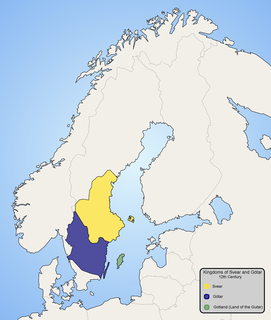 W
WThe consolidation of Sweden involved an extensive process during which the loosely organized social system consolidated under the power of the king. The actual age of the Swedish kingdom is unknown. Also, for various reasons, scholars differ in defining early Sweden as either a country, state or kingdom.
 W
WThe Unification of Hispaniola was the annexation and merger of then-independent Republic of Spanish Haiti into the Republic of Haiti, that lasted twenty-two years, from 9 February 1822 to 27 February 1844. The territory functioned as a self-governing entity with Dominican soldiers as overseers until the eventual independence from Haiti. What Haitians called "unification" was designed to protect their country from re-enslavement via the Spanish side of the island; but the Dominicans saw it as an invasion. This invasion sparked a Dominican movement for national independence, which was attained in February 1844.
 W
WThe unification of Nepal officially began in 1743 AD after King Prithvi Narayan Shah of Gorkha launched an aggressive annexation campaign seeking to broaden his own kingdom's borders. After conquering the Nepal Mandala, which consisted of the three separate city-states of the Kathmandu Valley, Kathmandu, Lalitpur and Bhaktapur, Shah moved his hilly capital in Gorkha to the fertile and wealthy city of Kathmandu and adopted the name Nepal for the entire Gorkha Empire.